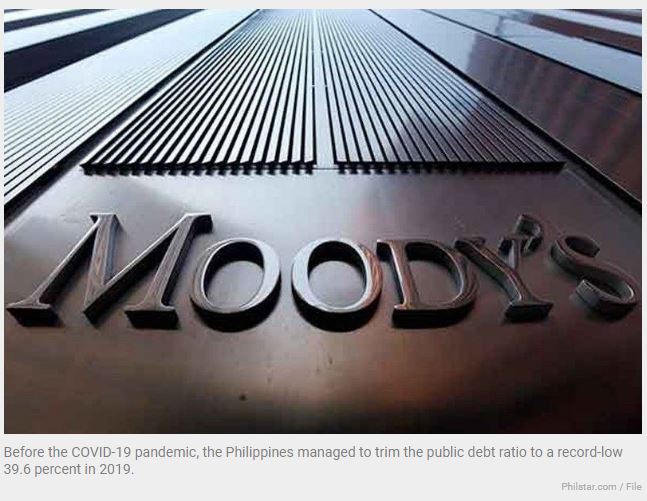Philippines debt rose the most in Southeast Asia – Moody’s
MANILA, Philippines — The ratio of government debt to the economic output, as measured by the gross domestic product (GDP), increased the most in the Philippines and Thailand since the end of 2019, according to Moody’s Analytics.
Before the COVID-19 pandemic, the Philippines managed to trim the public debt ratio to a record-low 39.6 percent in 2019.
However, due to higher borrowings to finance the country’s ballooning budget deficit and fund pandemic response measures, the government’s debt-to-GDP ratio jumped to 63.5 percent at the end of the first quarter of this year.
This was above the 60 percent threshold deemed by credit rating agencies as manageable among emerging markets like the Philippines.
In its latest commentary, Moody’s Analytics said the debt-to-GDP ratios across Asia-Pacific remain well above pre-pandemic levels, although several Southeast Asian countries saw some improvement last year.
However, the research arm of the Moody’s Group noted that the Philippines, Thailand and Vietnam had trouble containing total debt last year due to tightened COVID-19 quarantine and lockdown protocols.
“Government debt in Southeast Asia continued to rise in 2021, though the increase was not as steep as in 2020. Thailand and the Philippines experienced the largest government debt-to-GDP increase across Southeast Asia and across the globe between the end of 2019 and the end of 2021,” Moody’s Analytics said.
It noted that the Philippines and Thailand were the slowest-growing economies in the region last year and required substantial expansionary fiscal policy to support economic recovery.
According to Moody’s Analytics, both countries still have rather low debt-to-GDP ratios despite the sharp rise.
In other Southeast Asian countries, Moody’s Analytics noted that there were some signs of cutback in fiscal spending, with Indonesia and Singapore recording modest increases in government debt-to-GDP ratios last year in contrast to their aggressive deficit spending in 2020.
During the pandemic, it said Southeast Asian governments raised debt ceilings to accommodate higher borrowing and spending to support the economy.
“Post-pandemic, fiscal consolidation is expected to begin in 2023 as countries move toward endemic-COVID-19 policies, including an easing of social distancing measures,” Moody’s Analytics said.
Through a gradual and calibrated path of fiscal consolidation under the administration of President Marcos, Finance Secretary Benjamin Diokno said that economic managers aim to bring down the ratio to 61.8 percent in 2022, 61.3 percent in 2023 and down to 52.5 percent by 2028.
Source: https://www.philstar.com/business/2022/07/22/2197056/philippines-debt-rose-most-southeast-asia-moodys


 English
English




